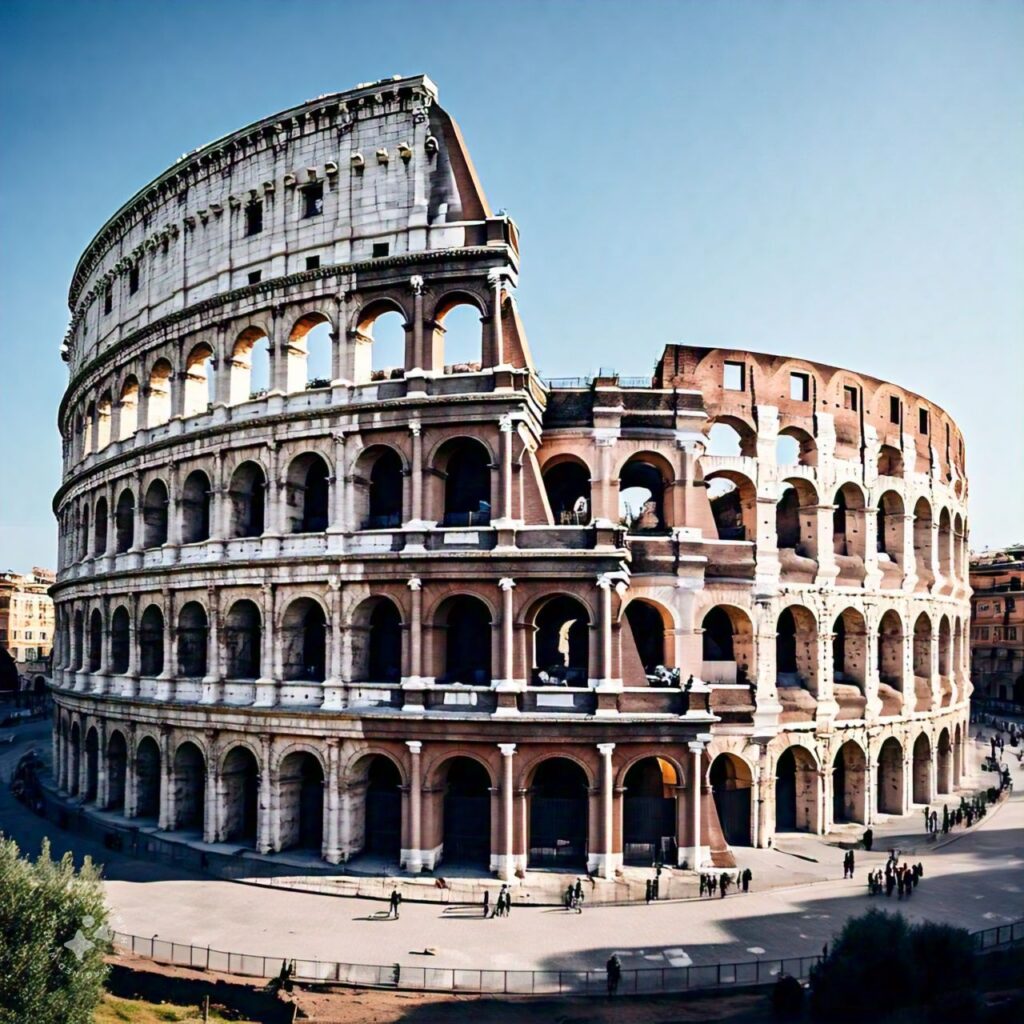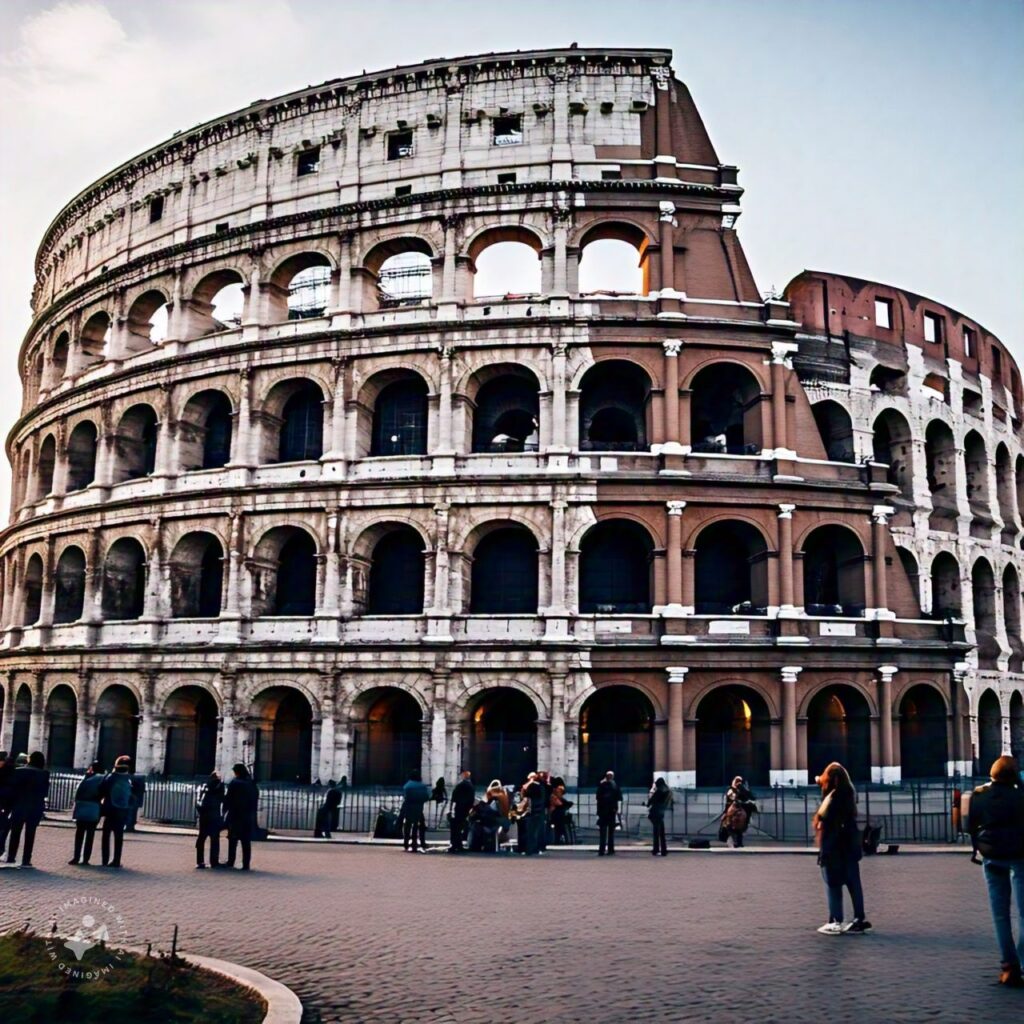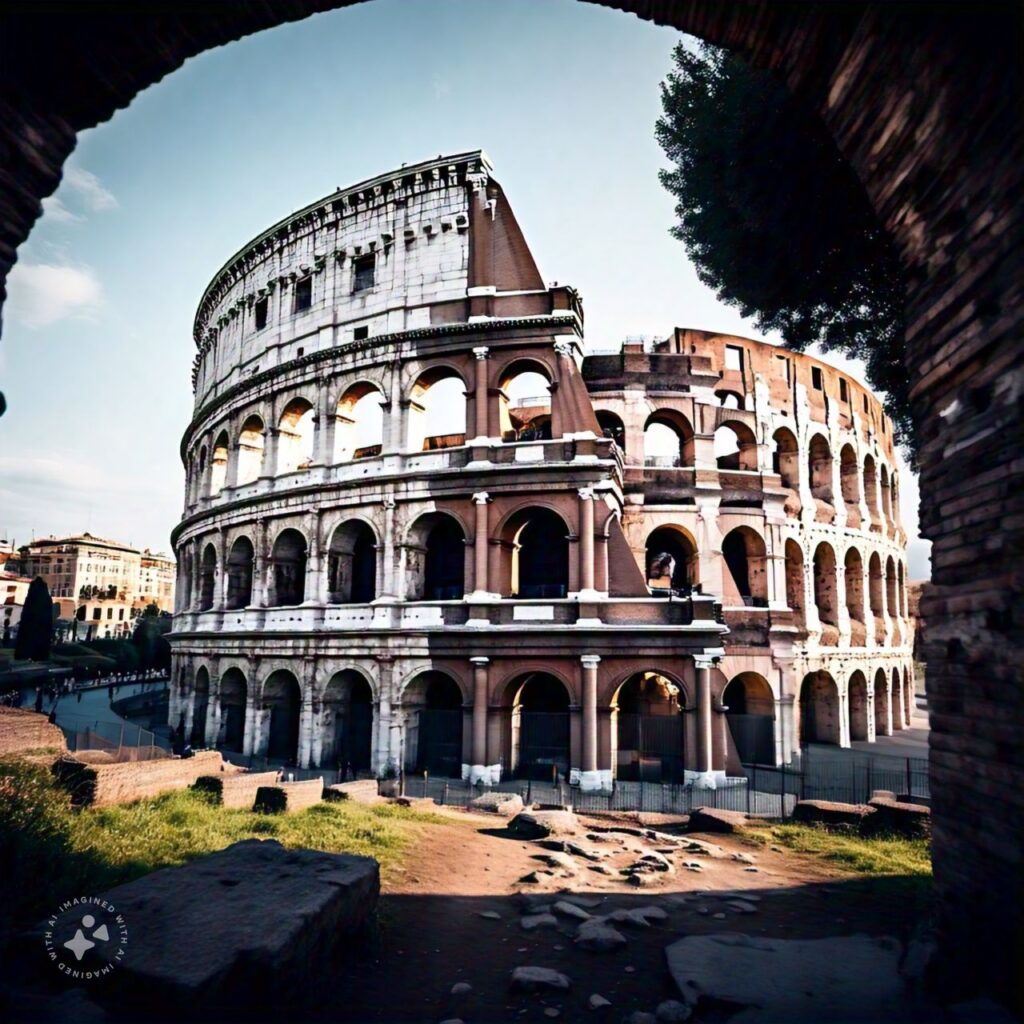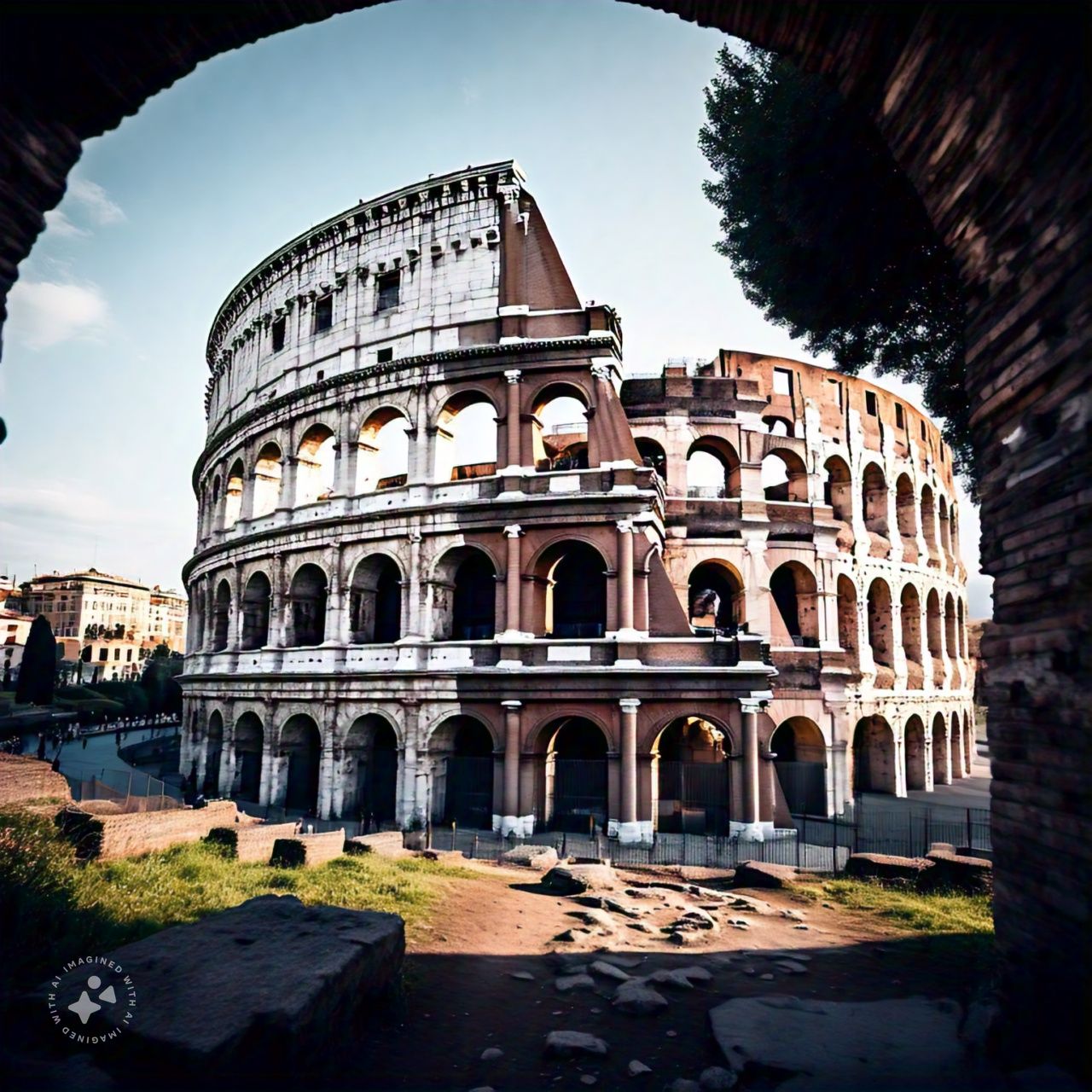Standing as an enduring symbol of ancient Rome’s grandeur and engineering prowess, the Colosseum is one of the world’s most iconic and visited historical landmarks. Known as the Flavian Amphitheater, this colossal structure is a testament to the ambition, creativity, and might of the Roman Empire. Located in the heart of Rome, Italy, the Colosseum has captured the imaginations of historians, travelers, and culture enthusiasts alike for centuries.
In this article, we will delve into the history, construction, significance, and cultural legacy of the Colosseum, exploring why it remains one of the most remarkable architectural feats of antiquity and a symbol of Rome’s imperial power.

The History of the Colosseum
The Colosseum was commissioned by Emperor Vespasian of the Flavian dynasty around 70 CE, and its construction was completed by his son Emperor Titus in 80 CE, with some further modifications made by Emperor Domitian. It was originally known as the Flavian Amphitheater, after the Flavian emperors who oversaw its construction. The Colosseum’s grand design and its purpose as a public entertainment venue reflected the power and resources of the Roman Empire.
The amphitheater was built on the site of a former imperial palace, which had been the residence of Emperor Nero. After his death, his successor Vespasian sought to restore power to the people of Rome by creating a public space for entertainment that would embody the strength of the empire. The Colosseum’s location near the heart of the Roman Forum symbolized the new emphasis on the welfare of the Roman citizens, as opposed to the luxury and excess of Nero’s reign.
The Colosseum’s construction required massive amounts of stone and labor. It was primarily built from concrete, tuff (volcanic rock), and travertine limestone, with a design that reflected both Roman engineering genius and the need to accommodate large crowds. Upon completion, the Colosseum was capable of seating between 50,000 and 80,000 spectators, making it one of the largest amphitheaters ever built in the Roman Empire.
The Purpose of the Colosseum: Gladiators and Public Spectacles
The Colosseum was primarily used for public spectacles, including gladiatorial contests, animal hunts, executions, mock naval battles, and reenactments of famous historical events. These events were held to entertain the Roman populace, often free of charge, and were a means for emperors and politicians to gain favor with the people. The Colosseum’s grand scale allowed it to host large-scale events that could captivate and awe the masses.
One of the most famous forms of entertainment at the Colosseum was the gladiatorial games, which involved professional fighters, often slaves or prisoners of war, engaging in combat for the entertainment of the public. Gladiators would fight to the death, or until one of them was rendered unable to continue the fight. These brutal contests were a symbol of the Roman obsession with power, strength, and honor.
In addition to gladiator battles, the Colosseum also hosted animal hunts, in which exotic creatures such as lions, tigers, elephants, and bears were brought into the arena to battle each other or face gladiators. These hunts were often staged to showcase the empire’s reach and its control over the natural world.
For special events, the arena was even flooded with water to stage mock naval battles (known as naumachiae), where ships would engage in battle, providing a spectacle of naval warfare to the spectators. This incredible feat of engineering demonstrated the Roman’s ability to manipulate the environment to suit their needs for entertainment.

The Architecture and Engineering of the Colosseum
The Colosseum’s architecture is a remarkable feat of Roman engineering. The structure was designed as an elliptical amphitheater, with an oval shape that ensured every seat had a clear view of the arena. The exterior of the Colosseum features a series of arches and columns made from travertine limestone, with three tiers of arches. The lowest tier is adorned with Doric columns, the middle tier with Ionic columns, and the upper tier with Corinthian columns, showcasing the Roman preference for symmetry and order in their architectural designs.
The hypogeum, a vast network of tunnels and rooms beneath the arena, was one of the most innovative features of the Colosseum. It housed gladiators, animals, and the machinery needed to stage the games. The hypogeum had lifts, trapdoors, and elevators, allowing animals and gladiators to be hoisted into the arena in dramatic fashion. The underground complex also provided storage for the weapons, props, and other equipment used during the games.
The Colosseum’s seating arrangement was designed to reflect the strict social hierarchy of Roman society. The seats were divided by class, with the emperor and high-ranking officials seated in the best positions closest to the arena. The common people, or plebeians, occupied the upper tiers, while women, slaves, and lower-class citizens were relegated to the highest and most distant sections.
The Colosseum was also equipped with an advanced roof system, known as the velarium, which was made of large awnings that could be extended to provide shade for the spectators. The velarium was operated by sailors from the Roman fleet, who were stationed at the Colosseum for this purpose.
Decline and Damage: The Fall of the Colosseum
Despite its grandeur, the Colosseum’s role as the center of public spectacle gradually diminished as the Roman Empire entered a period of decline. By the 5th century CE, the popularity of gladiatorial games began to wane, and the rise of Christianity led to the eventual abandonment of such brutal events. The last recorded gladiatorial games at the Colosseum were held in 404 CE, when the emperor Honorius outlawed them.
In the centuries that followed, the Colosseum suffered extensive damage due to natural disasters, including earthquakes in 847 and 1231, which caused the outer walls to collapse. Over time, much of the stone from the Colosseum was repurposed for other building projects, including churches, palaces, and fortifications. As a result, much of the Colosseum’s original structure was lost.
The Colosseum’s association with the early Christian martyrs also contributed to its decline. According to some traditions, early Christians were executed in the Colosseum, although historical evidence for this is sparse. Regardless, the structure began to be seen more as a relic of Rome’s pagan past than as a living monument of the empire.

The Colosseum Today: A UNESCO World Heritage Site
Today, the Colosseum is one of the most visited and recognizable landmarks in the world, attracting millions of tourists annually. As a symbol of ancient Rome’s power, culture, and architectural innovation, the Colosseum holds an important place in both the cultural and historical heritage of the Western world.
In 1980, the Colosseum was designated as a UNESCO World Heritage Site, recognizing its importance as a cultural monument. Efforts have been made to preserve the structure, although it continues to face challenges due to pollution, weathering, and the impact of tourism. Restoration projects are ongoing, with plans to reinforce the building’s structure, repair damaged sections, and improve safety measures for visitors.
The Colosseum is also an important part of Italy’s national identity and is frequently used for cultural and commemorative events. It stands as a powerful reminder of Rome’s glorious past, its advanced engineering skills, and its ability to create monumental structures that have withstood the test of time.
Conclusion: A Monument to Rome’s Legacy
The Colosseum is far more than just an ancient arena; it is a symbol of the Roman Empire’s might, architectural brilliance, and cultural influence. From its grandeur as the site of gladiatorial games to its current status as one of the world’s most enduring landmarks, the Colosseum continues to captivate the imagination of millions of visitors from around the world.
It serves as a testament to the ingenuity of the Romans and their ability to construct monumental structures that blend functionality with beauty. Even as the Colosseum endures the ravages of time, it remains a symbol of Rome’s enduring legacy—a timeless masterpiece of architecture, history, and culture.
